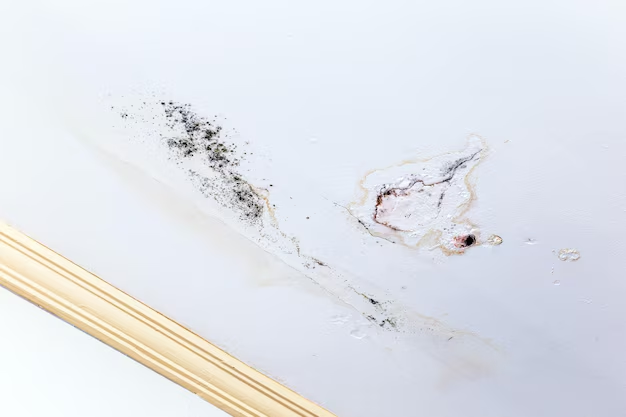If you’ve spotted dampness creeping up your walls, noticed a musty smell, or seen paint peeling near the floor — you might be dealing with rising damp.
But what exactly does rising damp look like? How can you distinguish it from other types of damp? And what should you do if it’s found in your home?
In this detailed guide, we’ll walk you through everything you need to know about rising damp — from how to identify it, to why it occurs, and what actions to take, especially if you’re renting from a local council or housing association.
What Is Rising Damp?
Rising damp is a form of moisture that travels upward from the ground through a building’s walls via a process called capillary action — similar to how water is absorbed by a sponge. It typically occurs when the damp-proof course (DPC) or damp-proof membrane (DPM) in a building becomes damaged, ineffective, or was never installed.
This issue is most common in:
-
Older properties (built before the 1920s)
-
Homes with poor ground drainage
-
Buildings where the external ground level has been raised over time
What Does Rising Damp Look Like?
Rising damp has distinct visual and physical signs. These are usually found at the bottom sections of walls and can range from minor to severe.
Here’s what you need to look out for:
1. Tide Marks and Water Stains
One of the clearest indicators of rising damp is a visible horizontal tide mark on internal walls. These lines show the highest point that the moisture has reached.
-
Color: Usually brown, yellow, or dark grey
-
Location: Up to 1 meter from the ground
-
Appearance: Faint at first but becomes more visible over time
2. Peeling Paint and Bubbling Wallpaper
Moisture causes adhesion problems, leading to:
-
Paint that bubbles, flakes, or cracks near the skirting board
-
Wallpaper that starts to curl, peel, or feel damp
-
Decorative finishes detaching from the wall
3. White Salt Deposits (Efflorescence)
As moisture rises and evaporates from the wall surface, it carries salts from the ground. These salts can appear as:
-
White, powdery deposits on walls
-
Crusty patches near the base
-
Sometimes causing the plaster to break down or crumble
4. Damp or Wet Patches on Lower Walls
The base of the wall may feel:
-
Cold or wet to the touch
-
Visibly darker in patches
-
Sticky or softened due to persistent dampness
5. Crumbling or Flaking Plaster
As moisture breaks down the plaster, it becomes:
-
Soft and powdery
-
Prone to cracking or falling off in sections
-
Often stained or discoloured
6. Rotting Skirting Boards or Floorboards
Timber affected by rising damp will eventually:
-
Warp, rot or crack
-
Develop black mould or fungal growth
-
Become brittle and loose
7. Musty or Damp Smell
Often the first sign you notice is not visual — it’s a smell. Rising damp gives off a distinct earthy, musty odour, especially in poorly ventilated rooms.
Common Areas Where Rising Damp Appears
-
Living rooms and hallways on the ground floor
-
Internal and external walls close to the ground
-
Basements or cellars
-
Behind furniture where air circulation is poor
Is It Rising Damp or Something Else?
Many homeowners confuse rising damp with other types of damp like:
| Type of Damp | Cause | Where It Appears |
|---|---|---|
| Rising Damp | Moisture rising from the ground | Bottom of internal walls |
| Penetrating Damp | Water leaking through walls (e.g. from rain) | Any level, usually external walls |
| Condensation | Moisture from inside the house | Windows, cold spots, corners of walls |
A professional damp survey is the best way to confirm the exact cause.
Can You Claim for Rising Damp?
Yes – if you’re a tenant in a council property or housing association home, and your landlord has failed to repair rising damp, you may be entitled to:
-
Free repairs
-
Compensation for damaged belongings
-
Compensation for health impacts or inconvenience
Your landlord is responsible for keeping the property free from serious hazards, including damp and mould under the Landlord and Tenant Act 1985 and Housing Health and Safety Rating System (HHSRS).
Contact Housing Disrepair Team for Damp & Mould Claims
Don’t live with rising damp that’s damaging your home and health.
At Housing Disrepair Team, we help tenants across the UK claim compensation for damp and mould, and other housing disrepair issues. Our expert team will handle everything from your landlord communication to take action and it’s all on a no win, no fee basis.
- No Win, No Fee Guarantee
- Fast, Free Case Assessment
- Experts in Housing Disrepair Law
Please Note: The solicitor we recommend will charge you a fee of 36% (inclusive of VAT) off your compensation. The solicitor may charge a termination fee if you cancel your agreement with them after the cancellation period, please read their Terms and conditions for more information.
Start Your Claim Today
Think you have rising damp in your rented home?
Contact Housing Disrepair Team now for a free consultation and find out if you can claim compensation.
Call us today or fill out our quick form and let us take care of the rest.
Rising damp isn’t just unpleasant it’s a serious issue that can cause health problems, property damage, and consequences for landlords who ignore it.
If you’ve seen any of the signs listed above, take action today.






